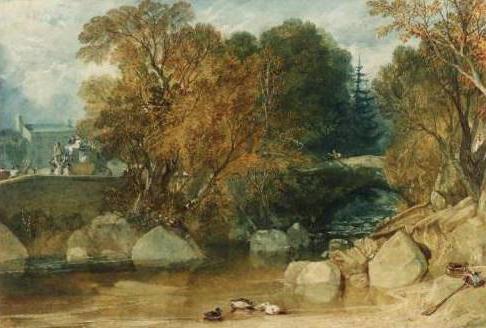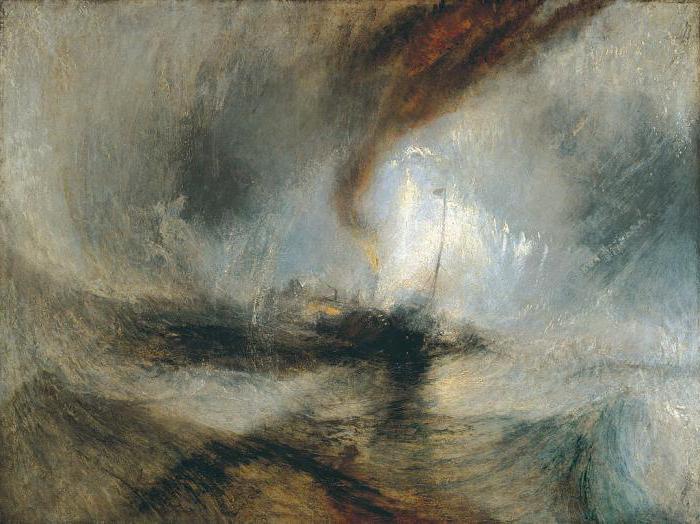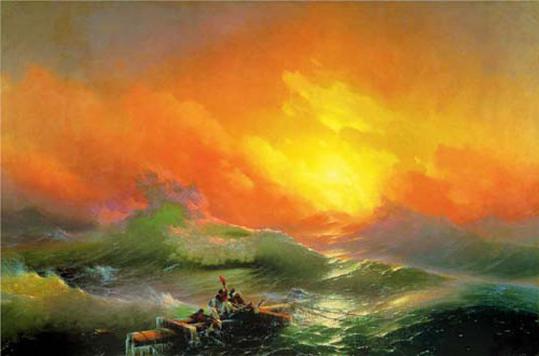Turner: an artist ahead of his time
William Turner is an artist of Britain whocreated romantic innovative landscapes and watercolor, and oil. His later works were not understood and appreciated by contemporaries. However, his work was deeply studied by Claude Monet, and it is impossible to challenge the influence of this painter on the French Impressionists.
Turner, artist: biography
One thing is certain: William Turner was born in London in 1775 and was baptized on May 14. His father, a barber and a wig manufacturer, sent William to his uncle in a small town called Brentford at the age of 10, standing on the Thames. Here the boy begins to paint landscapes from nature. His father displays his watercolors in his hairdresser and joyfully informs his clients that his son William Turner is an artist or, in any case, he is going to become one.
Academy of Arts
At the age of fifteen, he passed the exams, whichJoshua Reynolds accepted, and started his studies. Turner is an artist whom, as he believed himself, was formed by Thomas Malton, draftsman and topographer. But, attending the lectures of the President of the Academy, he was under the charm of idealism in art. And the first watercolor Turner, and the first oil painting, made in 1790, were exhibited at the exhibition of the Academy.
The work
But the greatest impression was made by the work,written in 1796. It's "Fishermen on the Sea". Already in this early work you can see the favorite composition technique that Turner-artist will use almost all his life - this is an oval, and also the theme - the image of a storm, a whirlwind and dramatic episodes that will go through all his work.

Turner in Europe
Since 1802, when the painter became free in funds, he travels through the countries of Europe. Turner visited Switzerland, France (studied in the Louvre) and forever fell in love with Venice.
Landscape painting
In the 10-20s, William Turner, an artist whose paintings are full of romance, is working enthusiastically on the scenery. He is still loyal to the traditions of the English landscape.


Style Features
Financial independence allowed Turner to freely introduce innovations into his mature work, without regard for customers. In the style of fantastic puzzles, he was very fond of writing the whims of nature.

At the age of 67 in 1842 he created the "Snow storm at night". The ship is barely visible in the whirlwind, which twists this little boat. Everything is mixed on a canvas, almost abstract: a squally wind that raises huge waves and drives low snowy clouds, and the smoke and steam that the steamer releases. He seeks a port that is barely visible on the horizon. The whirlwind spun everything into a clear oval, in the center of which it fights for the life of the ship.
Turner and the Industrial Revolution
At the end of XVIII century in England beginsindustrial Revolution. The appearance of steam locomotives and steamers immediately began to reflect in the creativity of a man who gravitates toward everything new. Turner is an artist whose paintings now depict technique. In this he is ahead of all his contemporary painters. On the canvas, which he called "Rain, steam, speed" (1844), the movement of the locomotive was dynamically transferred dynamically.

Personal life
In his younger years, until his father's death,In 1829, Turner lived with him. The father was both a friend and an assistant. The painter was never going to marry, although he lived with the elderly widow Sarah Danby. From her the artist had two daughters.
Later, he spent 18 years with Caroline Booth inChelsea. There he died in 1851. It is said that his last words were: "The sun is God." The artist is buried at his request in the Cathedral of St. Paul next to Sir Joshua Reynolds.








